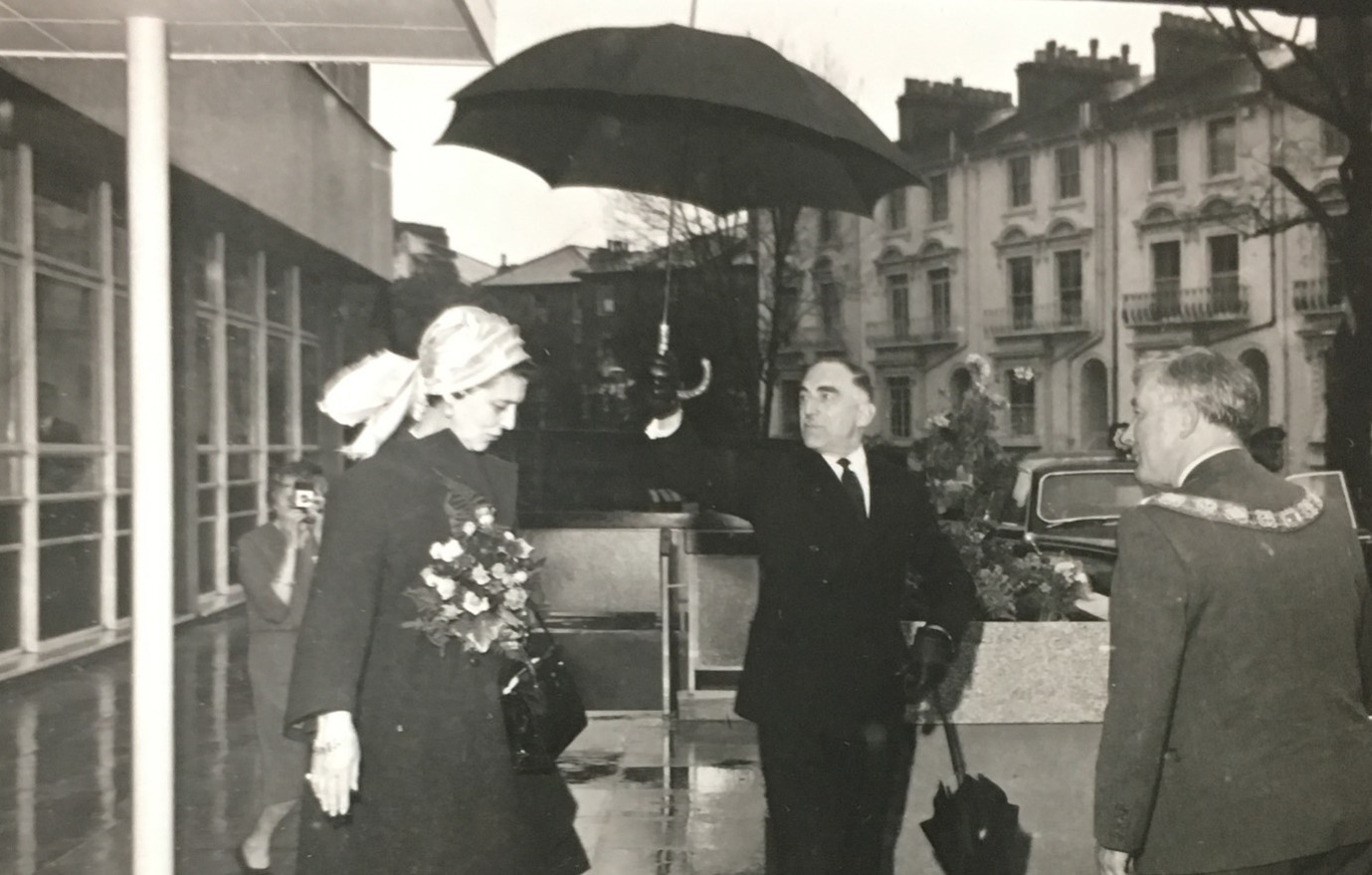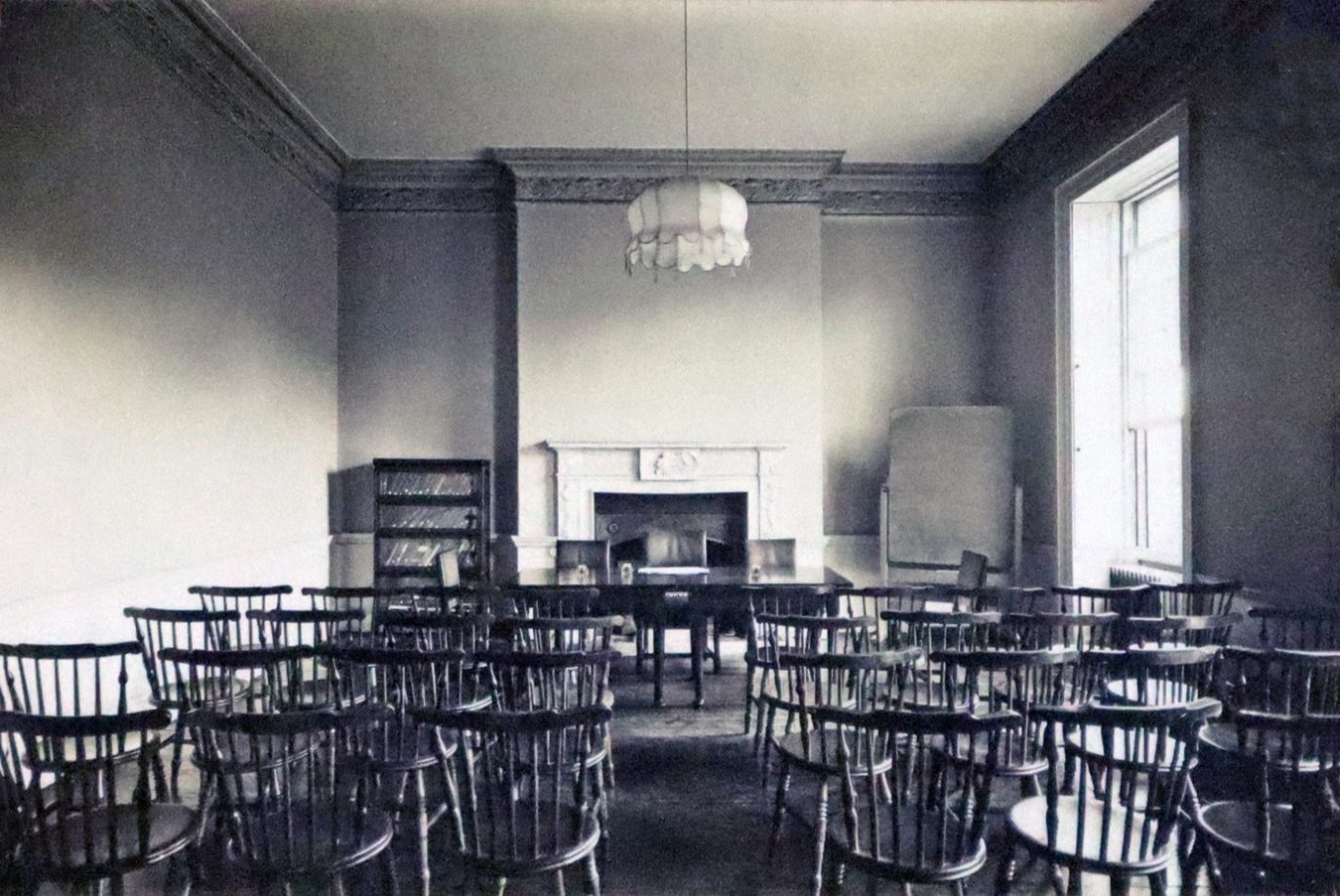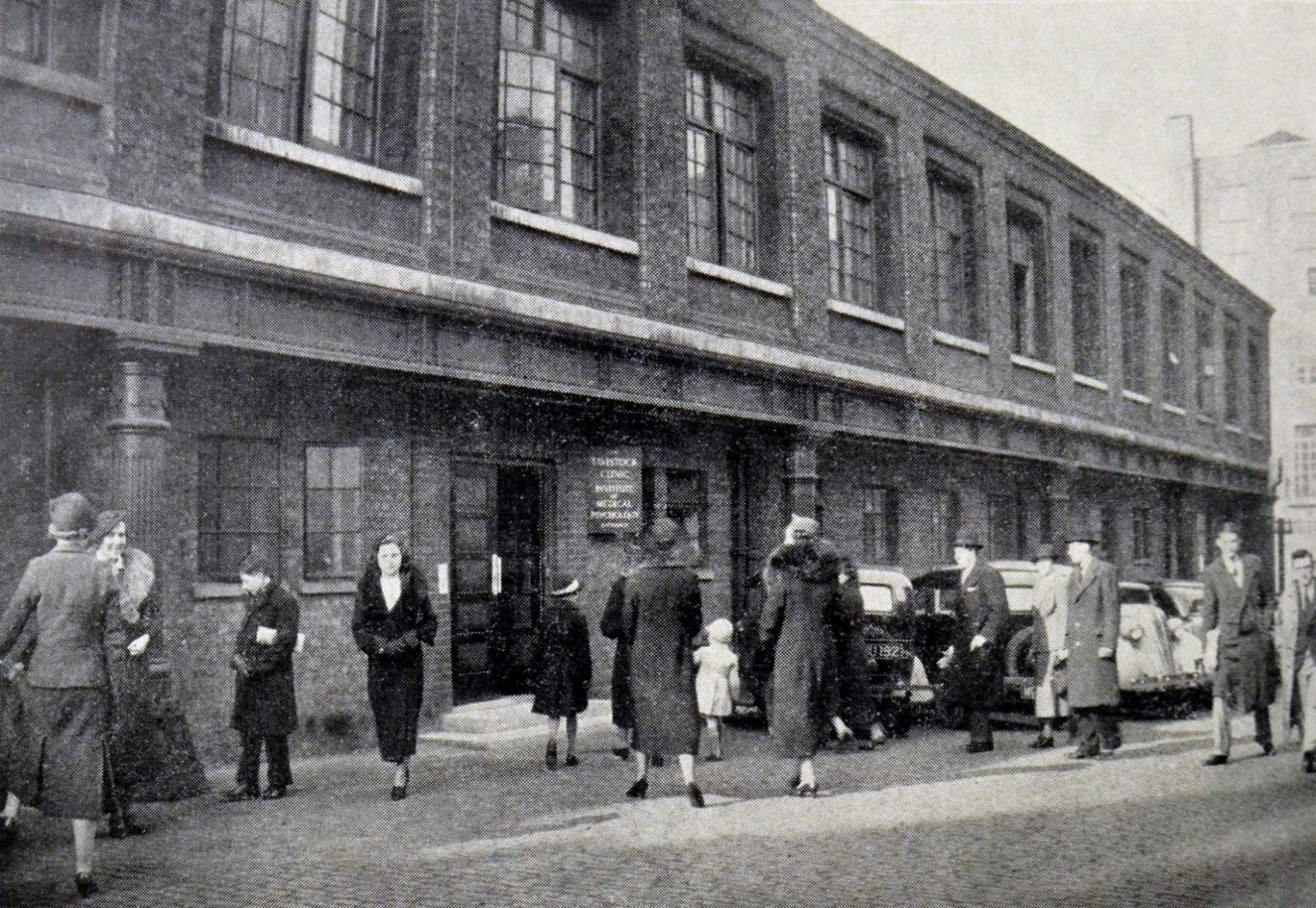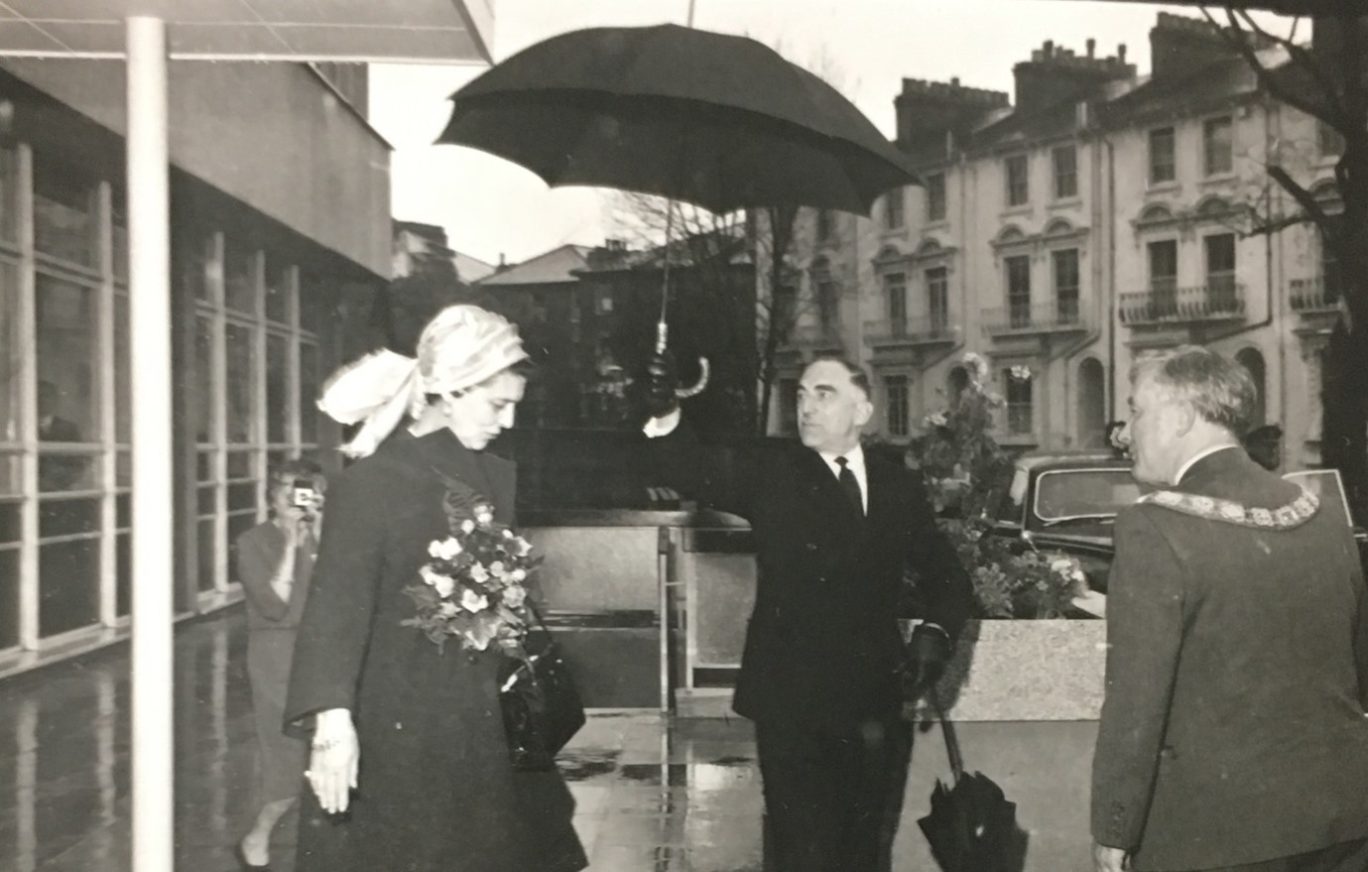
History of education at the Tavistock and Portman

The Tavistock Clinic, or the Tavi as it is more colloquially known, was founded on 27 September 1920 by Hugh Crichton-Miller at 51 Tavistock Square. It was established after World War 1 as a result of the experiences of that war. Crichton-Miller wanted to give civilians access to the same kinds of treatment that had been made available to soldiers during the war.
From its founding the Tavistock Clinic had four aims:
- Understanding and treatment
- Research
- Prevention
- Teaching
Crichton-Miller laid down the principle that Tavi staff were to be doctors first and psychiatrists second. He wanted a unified approach to diagnosis and treatment that he called ‘binocular vision’ – attending to both the physical and psychological needs of his patients. From the outset there was an awareness that the Clinic could not achieve its aims just through its clinical functions and education quickly became one of its most important activities.
In the early days our professional training took the form of training supervision meetings for staff and trainees, while our wider educational offer took the form of public lectures for doctors and teachers. There was an expectation that clinical staff would give time for the education programme that was run for both professionals and the public.
The Tavistock Clinic quickly became a victim of its own success as it did not have enough consulting rooms for the number of patient referrals or space for all those wanting to attend its lectures. By the end of the 1920s there was a serious aspiration for the Clinic to be part of the London University scene that was developing around them.

In 1932 the Tavistock Clinic moved to Malet Place at the heart of the University of London. As well as giving additional space for clinical consultations the move was oriented towards developing education and training as a major part of the Clinic’s contribution to mental health.
Malet Place was refurbished to meet the Clinic’s needs with purpose built consulting rooms and a large lecture theatre that could seat several hundred people. JA Hadfield, one of the seven founder members of staff, was appointed as Director of Education at the Tavistock Clinic in 1935. He had a strong academic background, lecturing at both the University of Birmingham and Kings College in the University of London. It was thanks to his influence that the Tavistock Clinic achieved university recognition for its courses in the 1930s.
Under Hadfield the Tavistock Clinic began organising lectures with famous guest speakers such as: Carl Jung, Alfred Adler, Emmanuel Miller, Edward Glover and Maria Montessori. He widened the range of courses that the Clinic ran and opened them up to other professions such as magistrates and probation officers as well as setting up a pioneering course for social workers in mental health.
Hadfield was also a founder member of the Portman Clinic, which was established in 1933, and sat on its education and scientific committees. Throughout the thirties the Tavi massively expanded across all its activities, but especially education.
Most of our education courses were suspended. Our three sites in central London were destroyed during the Blitz. The Clinic evacuated to Westfield College in Hampstead.
In 1945, 2 Beaumont Street became the fourth home of the Tavistock Clinic. Also in 1945 the Tavistock Institute of Human Relations (TIHR) was established to develop the new field of ‘social psychology’, and was set up as a separate non-profit making company.
The end of the war marked significant changes both in society and at the Tavistock Clinic, which joined the new NHS in 1948. The Tavistock Clinic entered the NHS primarily as a clinical institution. National provision for post-graduate teaching in the NHS went to the Maudsley. The Tavistock was not even considered as we ‘had no beds’. This was a huge blow for our aspirations, but did not signify the end of education and training at the Tavistock Clinic.
In 1945 HV Dicks took over from JA Hadfield to run education. Dicks transferred the Clinic’s post-graduate courses to the TIHR, which operated outside of the NHS, while the Tavistock Clinic itself offered a full syllabus of professional training courses. It was in this period that the Tavistock first started issuing an annual prospectus.
John Bowlby, who had just been appointed as head of the Department for Children and Parents, restructured the Children’s Department to make training a key component of its activities and resumed the pre-war relationship with the London School of Economics for the training of social workers.
In 1948 John Bowlby asked Esther Bick to develop a Child Psychotherapy course and this included the first ever infant observation seminars. Infant observation was a new form of learning and is widely regarded as one of the Tavistock Clinic’s most important innovations.
In 1957 the TIHR launched the first full scale experiments in group relations in partnership with the University of Leicester. The Leicester Conferences were the start of another unique stream of education for the Tavistock and along with infant observation established our unique approach of ‘learning from experience’.
Throughout the 1960s the Tavistock Clinic continued to focus on professional training. We gained recognition and accreditation from professional organisations including: the Association of Child Psychotherapists (ACP), Association of Family Therapists (AFT), British Psychoanalytic Council (BPC), British Psychological Society (BPS), British Association of Social Workers (BASW) and Skills for Care.
During this period the Tavi also gradually increased its international activities with staff travelling abroad to lecture and international lecturers and trainees coming to London.

In 1967 the Tavistock Clinic moved into new, purpose built premises at Belsize Lane, which it shared with the TIHR and London Child Guidance Training Centre, and in 1970 the Portman Clinic moved in next door at 8 Fitzjohns Avenue.
During the 1970s the Children’s and Parent’s Department flourished. Bowlby published his definitive trilogy on attachment theory. Mattie Harris significantly extended our child psychotherapy teaching, opening up the pre-clinical seminars to non-medical professions and extending the national influence of the Tavistock.
In 1975 John Byng-Hall and Rosemary Whiffen established the first family therapy training course at the Tavistock Clinic. This later led to the establishment of the first ever doctorate in family therapy, offered jointly by the Tavistock and the University of East London.
The first moves towards establishing a separate Directorate of Education and Training (DET) occurred in the early 1980s, under the leadership of Alexis Brook. Both the library and the Training Administration were acquired for the Clinic, and Dickie Bird became the Clinic’s first Dean. But it is comparatively recently that the separation of clinical and educational functions allowed DET to operate independently as a contemporary higher education institution, while continuing to draw on the deep clinical and consulting expertise in the organisation.
In the mid-80s the Seymour Report stated that although training at the Tavistock Clinic had professional recognition, it also needed academic accreditation, which we achieved, finding academic partners. Among these the University of East London (UEL) became our major partner.
In 1994 the Tavistock Clinic joined with the Portman Clinic and became an independent NHS trust, with Anton Obholzer as the Chief Executive. A national training contract was negotiated with the NHS alongside our clinical contract. Margaret Rustin became Dean and under her leadership education at the Tavistock Clinic expanded significantly. At one stage there were more than 1,000 Tavistock students enrolled on UEL courses and 70 per cent of the Tavistock Clinic’s income was coming from training.
As part of its contract with the NHS the Tavistock Clinic developed regional centres. One of the most effective ways of doing this was forming partnerships with senior local professionals. The child psychotherapists and family therapists were particularly energetic in this regional activity, and the adult psychotherapists followed suit. Quite quickly the Tavi was able to make links with almost all the health regions. Later, in 2002, The Northern School of Child Psychotherapy was established in Leeds, providing training to the whole of the north.
Our international profile was also important and a significant number of our senior staff developed training links in countries across the world.
In 2006, under the leadership of Nick Temple, the Tavistock and Portman achieved foundation trust status, giving us further independence. DET significantly consolidated its position with steady growth in the national contract, regional workforce involvement, and addressing strategic issues such as equality and diversity.
Trudy Klauber became the first Dean and Director of Education as the posts were combined. Under her leadership the Departmental Vice-Dean posts were transformed into Associate Deanships, linked to clinical services. DET began to more proactively manage quality assurance, relationships with academic partners and student feedback. The first Equalities Committee was established in DET with regular groups for minoritised students.
In 2013 Paul Jenkins was appointed as Chief Executive of the Trust and in February 2014 he published a strategic perspective, which highlighted the value that education and training had for the Trust. Jenkins wanted the Trust to reconsider the structural arrangements of education and training so that it operated as a Directorate in its own right rather than as a ‘bolt on’ to the clinical work.
Since 2015, under previous Dean Brian Rock, the Trust made significant strides in strengthening its education and training provision. This included establishing a separate directorate; creating roles specific to overseeing and delivering our long and short courses, including establishing the roles of Associate Dean, Learning and Teaching and Portfolio managers.
We have continued to develop our geographical spread making our teaching and training available across the country and internationally with centres in Belfast, Birmingham, Bristol, Leeds and Florence.
Early in 2020 we faced one of our biggest challenges: dealing with the impact of Covid-19. Over the two-week Easter break all of our classes were moved online. By the end of the summer term we were delivering almost 3,500 sessions per week and produced over two million minutes of online content in the month of June. As well as this, long-term development plans were brought forward, with the Trust’s Digital Academy opening to a global audience.
Our online courses, promoted under the Digital Academy brand, keeps the Tavistock and Portman at the forefront of mental health and wellbeing. They increase the reach of the Trust’s training and educational work allowing more people to benefit from the heritage, skills and experience of the Tavistock and Portman.
The fully online courses which students can access at a time and place that suits them, introduce concepts and ideas through short videos, activities, articles, peer discussion or reflective exercises presented by the Trust’s leading clinical educators. The courses enable our unique high-quality training to be available not just across the UK, but internationally, making our 100 years of educational experience ready for the next 100 years.
Explore our range of Digital Academy courses
Find out more about the history of the Tavistock and Portman, and purchase memorabilia